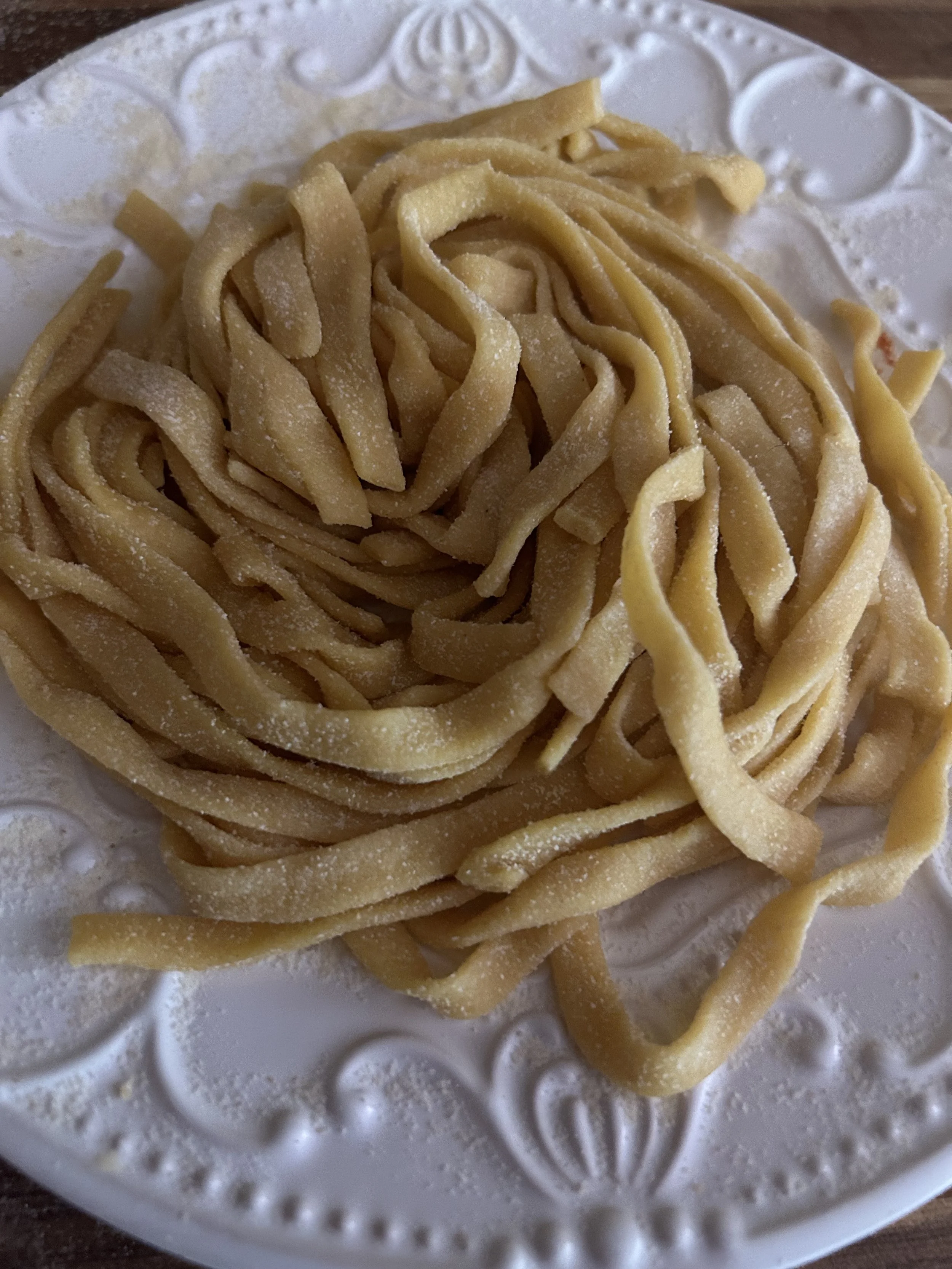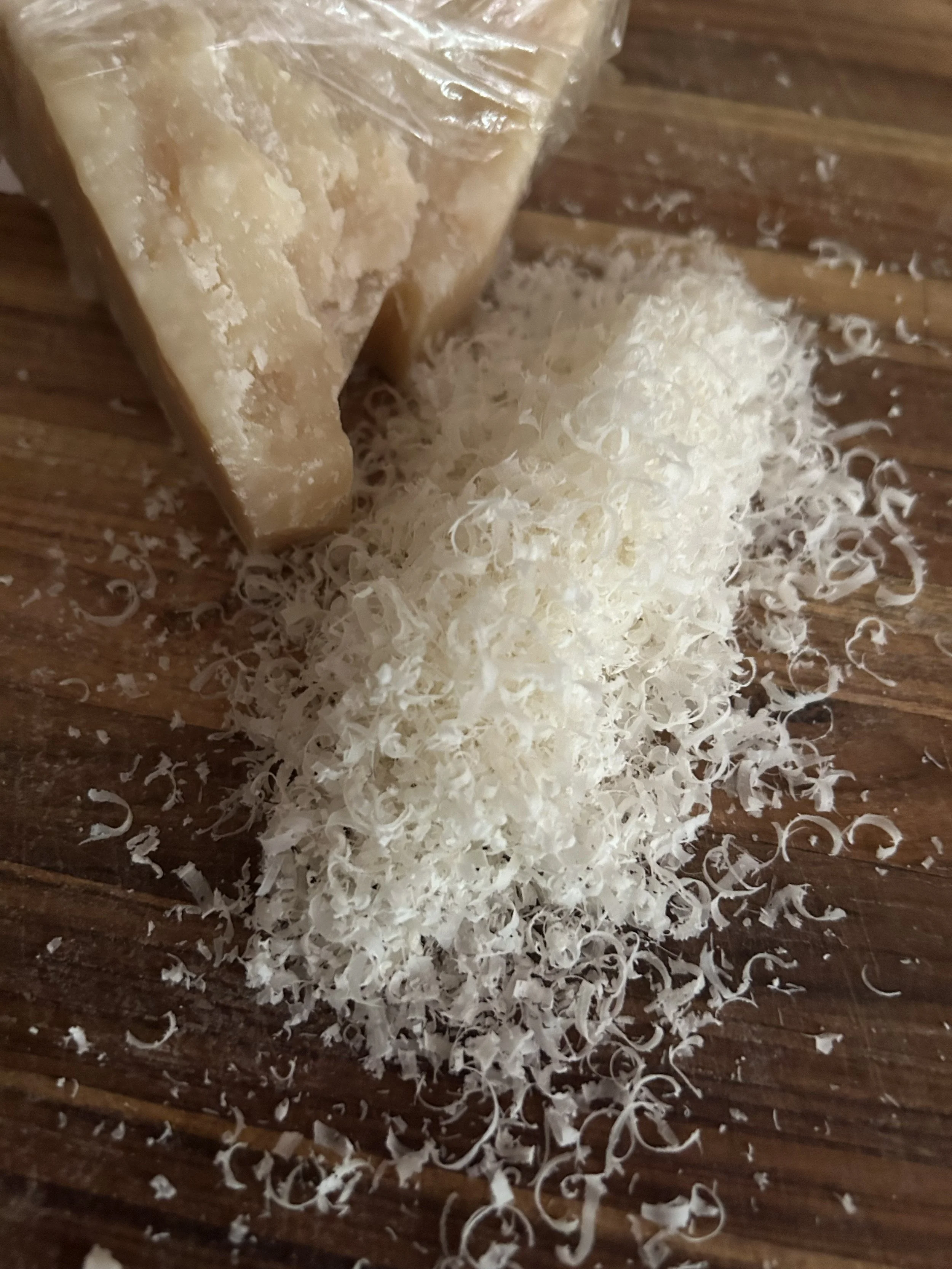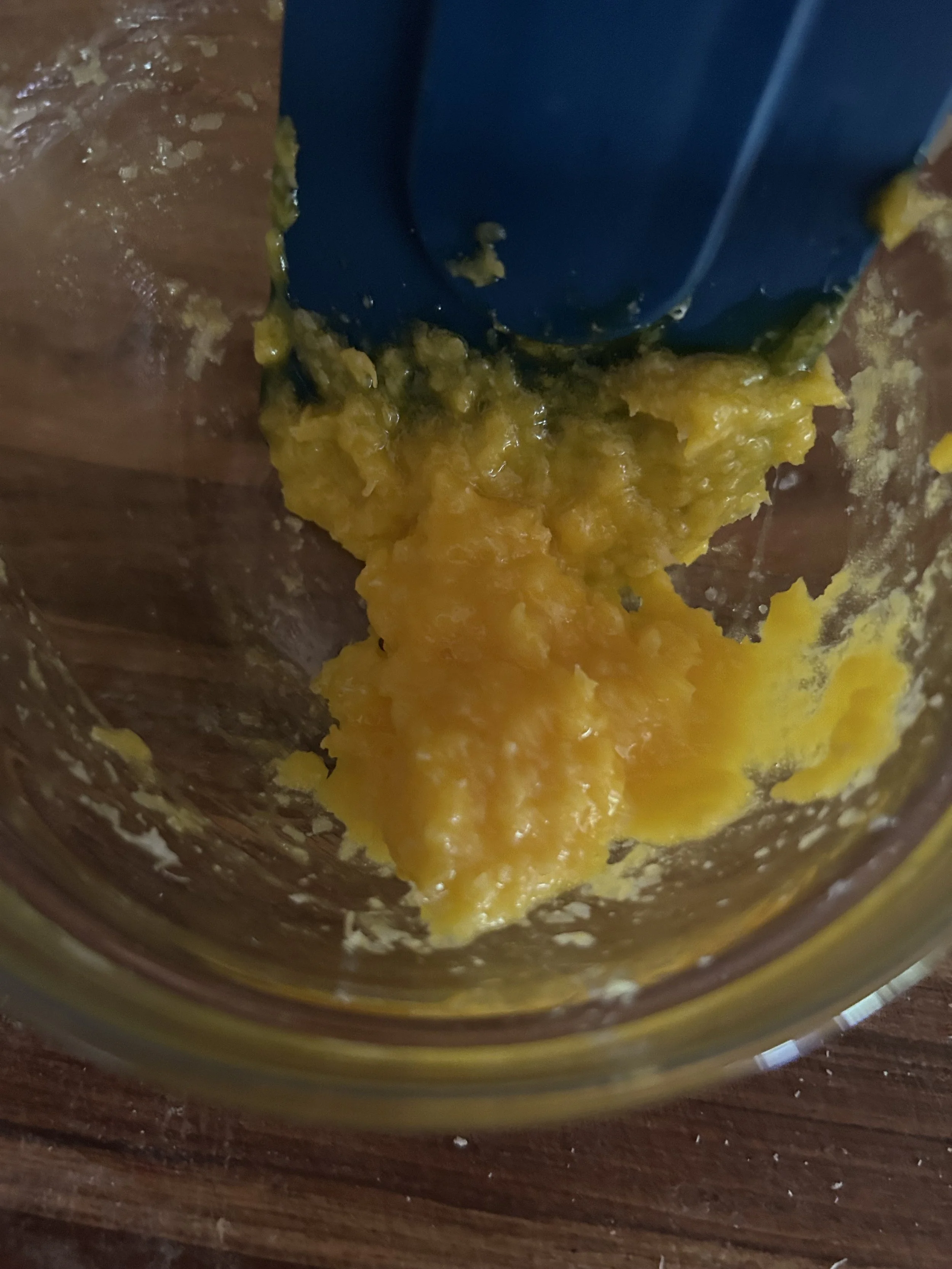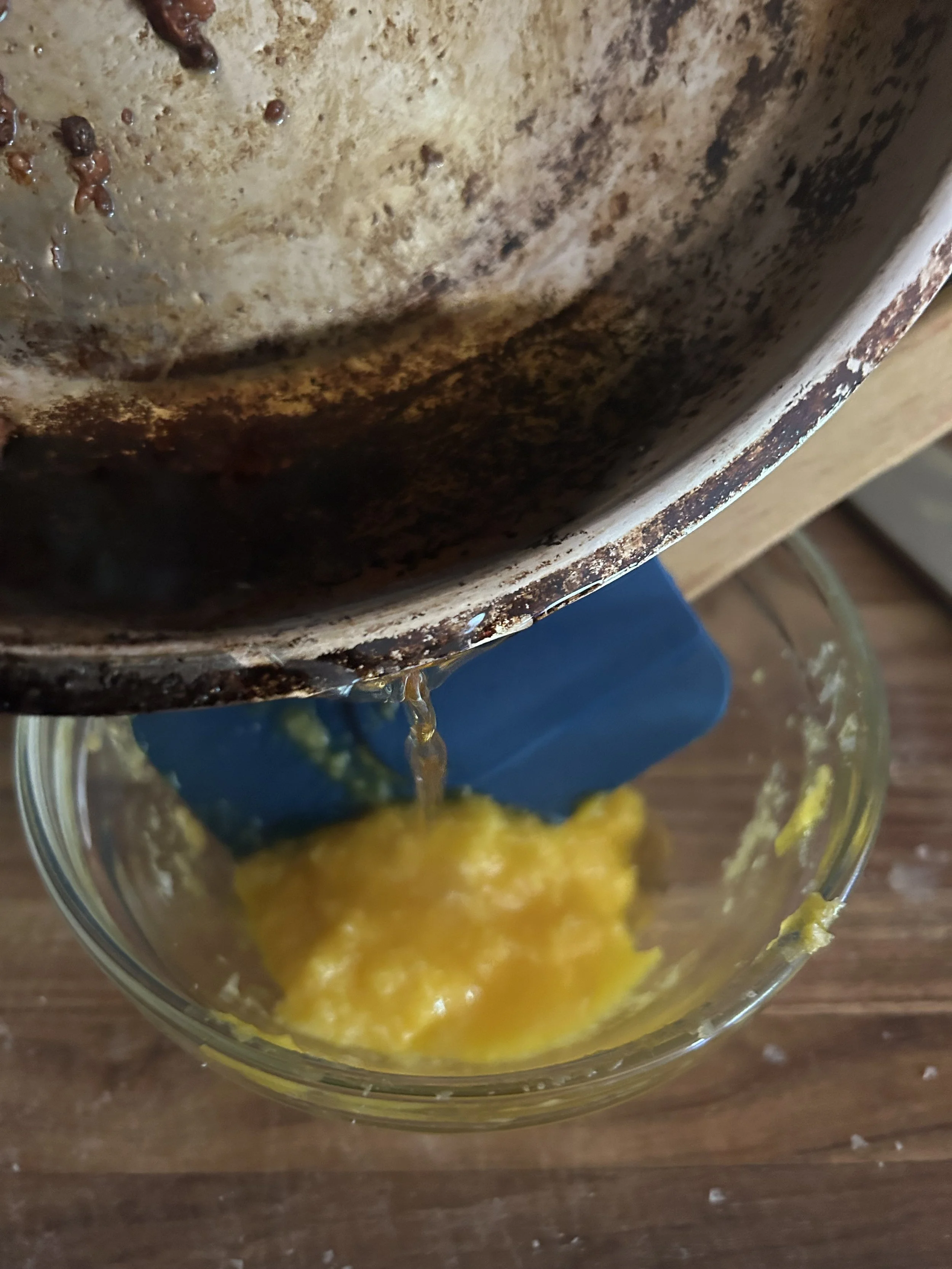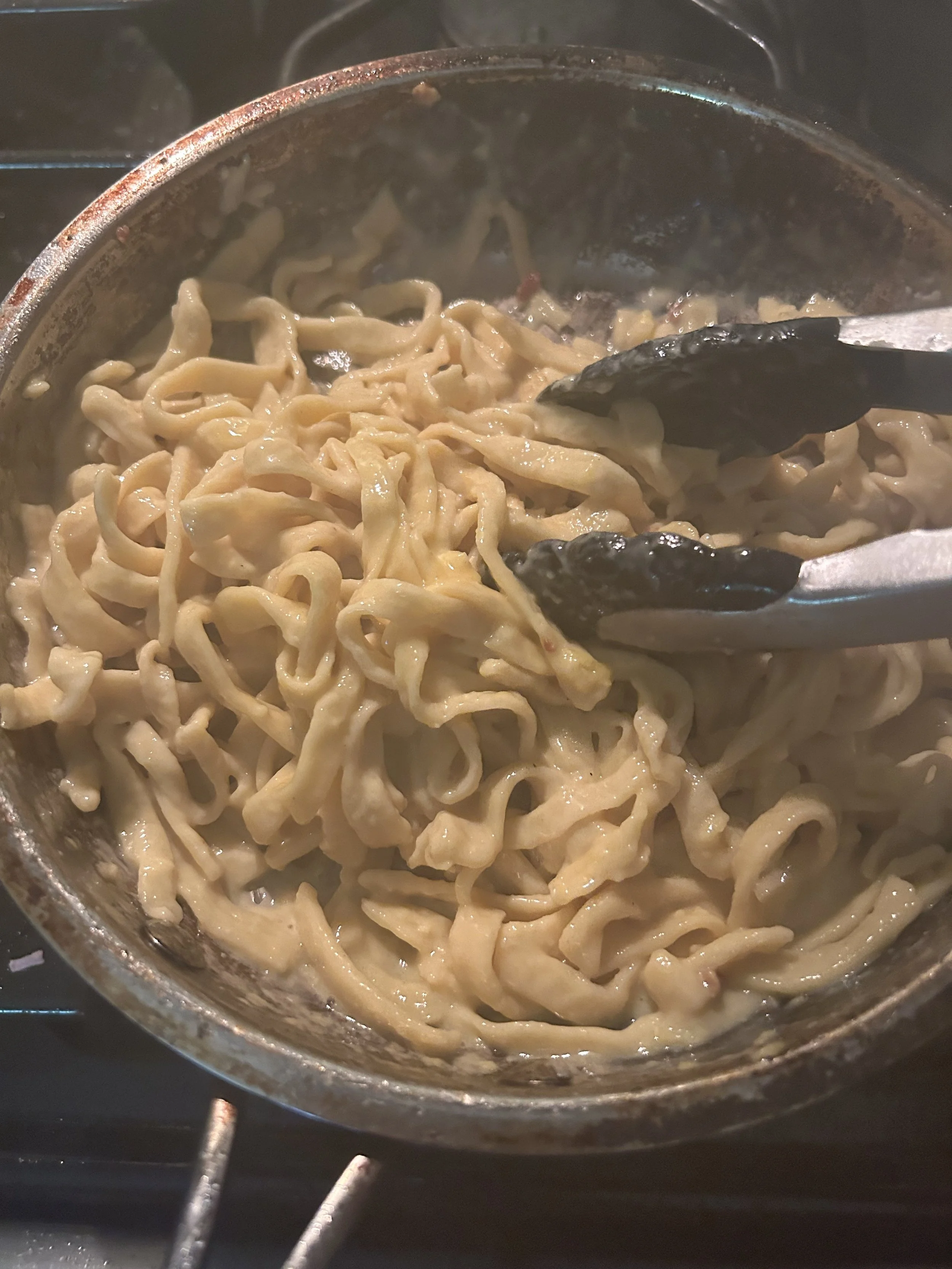Deconstructed: Pasta Carbonara
One of the most classic and beloved pasta dishes in all of Italy, pasta carbonara features pasta and cured pork tossed in a creamy sauce made with egg yolks, cheese, and pasta water.
It’s one of those pasta dishes that has a place in almost every Italian restaurant in the world as everyone (except for those who might have a gluten/dairy allergy or vegan) loves it that much.
But how do the individual components of this humble pasta dish come together to form one of the most classic Italian dishes out there? That is what I am here to discuss!
Join me as we dive into the wonderful world of carbonara, find out what role each ingredient plays, and how you can make a close-to-authentic Italian carbonara at home.
The word carbonara comes from the Italian word, Carbonaro, meaning ‘coal burner’, as it’s believed that the dish was originally made for hard-working outdoor workers and coal miners as they needed a fast, easy, filling dish to help them get through the day.
Carbonara is also believed to take its origin from a Neapolitan dish, pasta cacio e uova, which was made by tossing pasta with rendered lard, beaten raw eggs, and cheese, a dish that was documented by an 1839 Neapolitan cookbook.
Some variants of this classic dish have popped up in recent years like a seafood carbonara and also Carbonara Monferrina, made with white asparagus and toma cheese, a soft, semi-hard cheese made from an Italian cow’s milk.
Today, however, I’ll be focusing on the classic dish that started it all.
Pasta
As mentioned in my article on Cacio e Pepe, the pasta in pasta carbonara provides the starchy, solid substance that picks up the creamy, cheesy sauce and delivers it to your mouth, and also keeps you from eating a bowl of bacon, eggs, and cheese…which is also most breakfasts in America.
Spaghetti is a classic pasta to use for carbonara, it’s round shape and long…longness allows you to swirl it and pick up the sauce, but any long pasta like bucatini or tagliatelle will work as well.
Cured Pork
Just about every recipe for carbonara out there calls for using a cured, bacon-like pork product to add saltiness, a bit of fat, and also a bit of protein. Once rendered, the pork also provides a bit of a crispy texture that goes nicely with the soft pasta.
The classic for carbonara has to be guanciale, a cured pork product similar to bacon but made with the jowl or cheek of the pig, it’s nice because it has a stronger flavor than some of the other types of bacon out there.
However, guanciale isn’t always available, so a good substitute would be diced pancetta, which, like bacon, is made with pork belly, but is cured and not smoked. The pancetta won’t have the exact same depth of flavor as the guanciale, but it’ll still give a nice saltiness.
I would make sure you’re either using a large diced pancetta, I like the texture that the larger pancetta chunks provide, or even going to your deli counter, buying a slab of pancetta, and dicing that yourself.
(Also, don’t tell anyone who is from Italy, but in a pinch, you can also use regular bacon.)
Eggs
The foundation for any carbonara sauce, and also one of the more finicky things when making it, eggs mix with the hot sauce and pasta to help form the signature creamy texture that makes carbonara so addictive.
This is tricky because you want the eggs to break down and bind to the pasta to form a sauce, but they can also very easily scramble from the hot pasta. Fortunately, there are ways around this, which I will discuss later.
Some carbonara recipes call for using whole eggs, but I find that the egg whites water down the sauce too much. Just using the yolks, however, allow the fat from the pork to emulsify with the sauce and help it achieve a silkier, richer texture.
Cheese
I don’t think there is a pasta dish out there that isn’t automatically better once the cheese is added.
Like with Cacio e Pepe, carbonara utilizes a firm, salty cheese which, when emulsified with the egg yolks and pasta water, melt down and create a wonderfully creamy sauce, similar to a macaroni and cheese sauce.
Parmesan is the classic that we all love, but any firm, salty cheese like pecorino, or even Grana Padano will work well. (You could even use a mix of cheeses if you’re feeling adventurous.)
Ok, now that we’ve dissected the basic components of pasta carbonara, now it is time to discuss how to make a great dish at home.
Pasta Carbonara
Salt
1 pound of dried spaghetti or any long pasta.
1/2 cup of diced pancetta, guanciale, or bacon
3 tablespoons of olive oil
4 egg yolks
1 cup of grated parmesan cheese, plus more for topping
Freshly ground black pepper
Start by cooking the pasta in a large pot of salted boiling water until al dente, it should take 7-9 minutes for dried, 1-2 minutes for fresh.
While the pasta cooks, render the pancetta in the olive oil over medium-low heat until browned and crisp. Reserve the pancetta onto paper towels, but keep the rendered fat.
In a heatproof bowl, combine the egg yolks and grated parmesan to form a paste, then add about 2 tablespoons of the rendered pancetta fat.
Mixing the eggs with the grated parmesan will help prevent the yolks from curdling when we add the hot pasta and pasta water to it in a moment. Also, adding the hot pancetta fat will bring up the temperature of the yolks slightly to allow it to form a creamy sauce.
Once the pasta is cooked, reserve about a cup of the pasta’s cooking water, then drain.
In the same pan used to render the pancetta, add the pasta and 1/2 cup of the reserved pasta water and bring that to a simmer.
Take the pan off the heat, add the egg mixture, and cook, swirling constantly, until a thick, creamy sauce forms, adding more pasta water if needed to thin out the sauce.
Divide the pasta mixture among bowls, then top with the reserved pancetta, a grating of parmesan, and a few grinds of pepper.
There is nothing to not love about this carbonara recipe; rich, creamy, cheesy sauce that hugs the pasta the right way, plus the salty, slightly crispy bits from the pancetta.
Given all of the wonderful ingredients that come together to create it, there’s no question as to why this is one of Italy’s most popular dishes.


